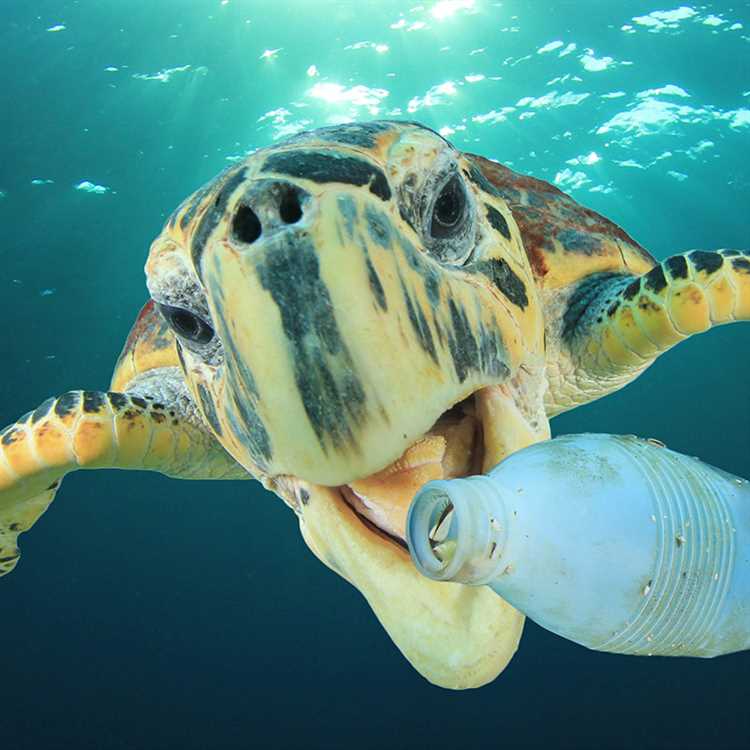
In recent decades, the issue of plastic pollution in our oceans has become a global crisis that demands immediate attention. As our society increasingly relies on single-use plastics and fails to properly manage waste, an alarming amount of plastic has found its way into our oceans, wreaking havoc on marine ecosystems and creating long-lasting damage to the planet.
This article aims to shed light on the staggering amount of plastic present in our oceans today and the dire consequences it has for both marine life and human well-being. It is estimated that there are currently more than 5 trillion pieces of plastic floating in our oceans, weighing over 270,000 tons. To put this in perspective, that’s equivalent to the weight of over 50,000 elephants!
The main culprits behind this plastic epidemic are plastic bottles, bags, packaging, and fishing gear. These items either end up directly in the ocean due to improper disposal or are carried by rivers and wind from landfills to the coast. Once in the water, plastics break down into small particles known as microplastics, which are ingested by marine animals and subsequently enter our food chain.
The impact of plastic pollution on marine life is devastating. Sea turtles mistake plastic bags for jellyfish and choke on them, while seabirds become entangled in discarded fishing nets. Countless fish, dolphins, and whales have been found dead with stomachs full of plastic debris. As plastic takes hundreds of years to decompose, these marine creatures suffer from the consequences of our careless plastic consumption for generations to come.
- The Global Crisis
- Impacts on Marine Life
- Human Health Concerns
- The Impact of Plastic
- Plastic in Our Oceans
- Extent of the Problem
- The Consequences
- Impact on Marine Life
- Ecological Impact
- Human Health Concerns
- Solutions and Future Outlook
- Question-answer:
- How much plastic is in the ocean?
- What is the main source of plastic pollution in the ocean?
- What are the environmental impacts of plastic pollution in the ocean?
- What can be done to address the plastic pollution crisis in the ocean?
The Global Crisis
The global plastic crisis has reached alarming levels, with the amount of plastic in the ocean continuing to increase at an alarming rate. This crisis poses a significant threat to marine life, ecosystems, and even human health.
Plastic pollution in the ocean is a direct result of human activity, with plastic waste from land-based sources being the primary contributor. Plastics that end up in rivers and streams often make their way to the ocean, carried by currents and tides. Once in the ocean, plastics can travel long distances, accumulating in massive ocean garbage patches.
Impacts on Marine Life
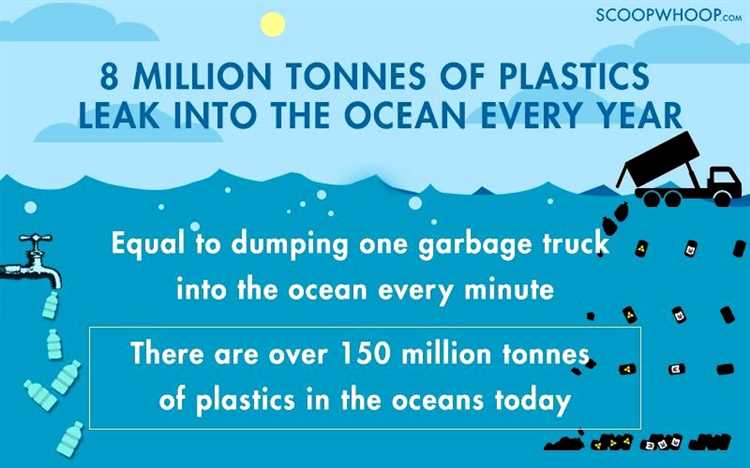
The presence of plastic in the ocean has devastating effects on marine life. Large marine animals such as whales, dolphins, and sea turtles can mistake plastic debris for food, leading to choking, internal injuries, and death. Many seabirds also suffer the same fate, often ingesting small pieces of plastic that they mistake for food.
Moreover, plastic pollution in the ocean has indirect effects on marine ecosystems. Plastics can entangle marine animals, preventing them from moving, feeding, or reproducing properly. Coral reefs, an essential ecosystem in the ocean, are also threatened by plastic pollution, as plastics smother and suffocate them.
Human Health Concerns
The global plastic crisis also poses risks to human health. Microplastics, tiny particles of plastic measuring less than 5mm, have been found in various types of seafood consumed by humans. These microplastics can accumulate in the tissues of marine animals, eventually making their way up the food chain and into our plates.
Studies have shown that microplastics can have harmful effects on human health, such as disrupting hormone functions, causing reproductive problems, and potentially contributing to the development of certain diseases. Therefore, reducing plastic pollution in the ocean is not only crucial for the preservation of marine life but also for safeguarding our own well-being.
In conclusion, the global crisis of plastic pollution in the ocean is a pressing issue that requires immediate action. Governments, industries, and individuals must work together to reduce plastic waste, promote recycling, and develop more sustainable alternatives. Only through collective efforts can we hope to mitigate the impacts of this crisis and preserve the health and integrity of our oceans for future generations.
The Impact of Plastic
Plastic pollution is one of the most pressing environmental issues of our time. The staggering amount of plastic in the ocean has devastating consequences for marine life, ecosystems, and, ultimately, the entire planet.
The presence of plastic in the ocean poses a serious threat to marine animals. Many species mistake plastic debris for food and end up ingesting it. This can lead to internal injuries, blockages in their digestive systems, and even death. Birds and turtles are particularly vulnerable, as they frequently mistake floating plastic bags and other items for jellyfish, a common food source. Additionally, marine animals can become entangled in plastic waste, leading to injuries and suffocation.
Plastic pollution also has indirect effects on ecosystems. Plastic debris can smother and damage coral reefs, which are vital habitats for numerous marine species. In addition, the presence of plastic particles in the water can disrupt marine food chains, as it can be mistaken for plankton and ingested by a range of species. This can ultimately have cascading effects throughout the entire ecosystem.
Furthermore, plastic pollution has far-reaching consequences for human health. Studies have shown that plastics can release toxic chemicals into the environment, which can then enter the food chain and end up on our dinner plates. The health risks associated with the consumption of these toxic substances are still being studied, but it is clear that they pose a potential threat to human well-being.
In order to mitigate the impact of plastic pollution, it is crucial that we take action at both individual and collective levels. This involves reducing our use of single-use plastics, properly disposing of waste, and promoting recycling and sustainable alternatives. By working together, we can make a significant difference in preserving our oceans and protecting the countless species that call them home.
In conclusion, the impact of plastic pollution on the ocean is severe and wide-ranging. It harms marine life, disrupts ecosystems, and poses potential risks to human health. Addressing this crisis requires immediate and concerted action to reduce plastic consumption and improve waste management practices.
Plastic in Our Oceans
Plastic pollution has become a major concern in recent years, with the amount of plastic in our oceans reaching alarming levels. The problem of plastic waste has a devastating impact on marine life and ecosystems around the world.
Plastic is lightweight, durable, and versatile, making it an ideal material for many products. However, its durability also means that it does not biodegrade easily. Instead, it breaks down into smaller pieces known as microplastics, which can persist in the environment for hundreds of years.
Every year, millions of tons of plastic waste enter the oceans, primarily from land-based sources. This includes improperly disposed of plastics, such as packaging materials, single-use bottles, and plastic bags, which are often carried by wind and water into rivers and eventually end up in the ocean.
Once in the ocean, plastic waste poses a significant threat to marine life. Animals such as seabirds, turtles, and marine mammals can mistake plastic for food, leading to ingestion and entanglement. This can result in injury, illness, and even death.
Furthermore, microplastics have been found in the stomachs of fish and other seafood, which can make their way to our plates. The potential human health risks of consuming plastic-contaminated seafood are still under investigation, but it is a growing concern.
Efforts are being made to address the issue of plastic pollution in our oceans. Awareness campaigns, stricter regulations on single-use plastics, and improved waste management systems are some of the steps being taken to reduce plastic waste and protect marine ecosystems. However, more needs to be done to tackle this global crisis and ensure a sustainable future for our oceans.
Extent of the Problem
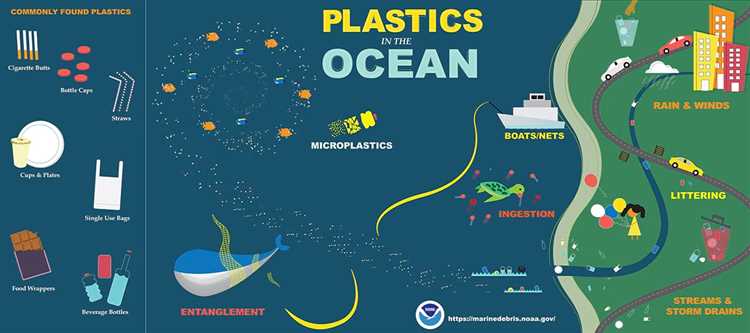
The extent of the plastic pollution problem in our oceans is truly alarming and has reached crisis proportions. Studies have estimated that there are over 5 trillion plastic pieces floating in our oceans, with a total weight of more than 250,000 tons.
This problem is not limited to one specific area or country, but is a global issue. Plastic pollution can be found in every ocean, from the pristine Arctic to the remote Pacific islands. It affects marine life, ecosystems, and even human health.
Plastic waste comes from a variety of sources, including single-use plastics like bottles, bags, and straws, as well as microplastics that result from the breakdown of larger plastic items. These microplastics are particularly dangerous, as they can be ingested by marine animals and find their way into the food chain.
The impact of plastic pollution on marine life is devastating. Whales, dolphins, sea turtles, and seabirds are just a few examples of the species that are affected by plastic debris. Many marine animals mistake plastic for food and end up ingesting it, which leads to internal injuries, starvation, and death.
Furthermore, plastic pollution has far-reaching consequences for the health of our oceans and ecosystems. Coral reefs, for example, are threatened by plastic debris, as it can smother and kill the fragile coral polyps. Plastic waste can also release toxins into the water, posing a danger to marine organisms and the overall ecological balance.
The problem of plastic pollution requires urgent action at both the individual and the global level. We need to reduce our consumption of single-use plastics, recycle more, and find sustainable alternatives. Governments and organizations must also cooperate to implement effective waste management systems and clean up existing pollution.
By working together, we can make a significant difference and ensure a cleaner and healthier future for our oceans and the countless species that call them home.
The Consequences
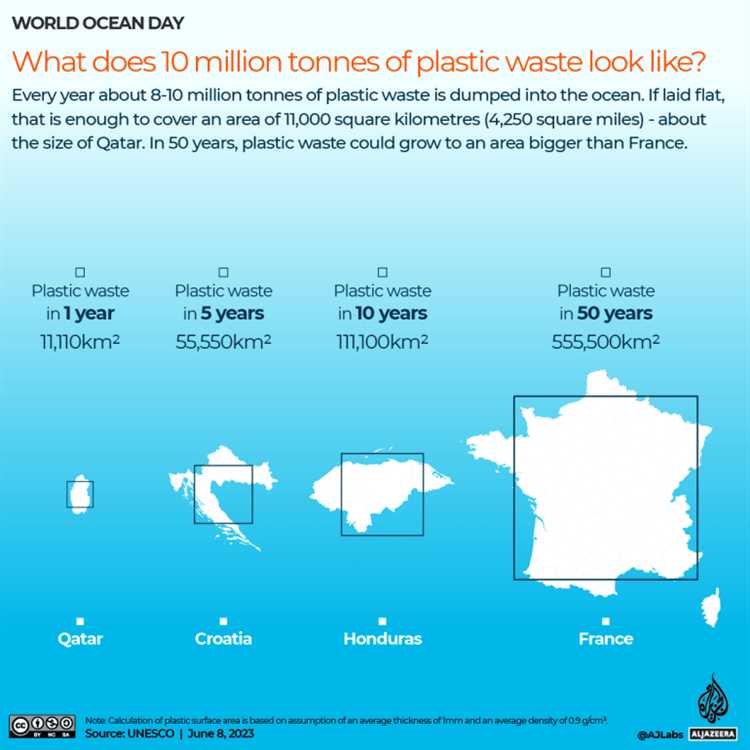
The consequences of the global plastic crisis are dire and far-reaching. The sheer amount of plastic in our oceans has devastating effects on marine life, ecosystems, and even human health.
Impact on Marine Life
Marine animals are the most directly affected by plastic pollution. They often mistake plastic debris for food and end up ingesting it. This can lead to serious health problems, such as internal injuries, blockages in their digestive systems, and even death.
Plastic waste also entangles marine animals, such as sea turtles, seals, and birds, causing them physical injuries, hindering their movement, and ultimately leading to their demise. These entanglements can trap animals for extended periods, causing physical and psychological distress.
Ecological Impact
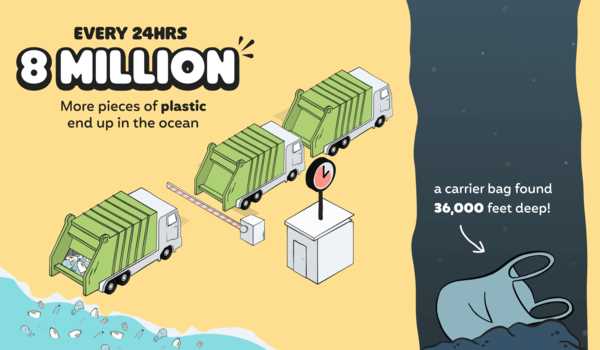
The presence of plastic in the ocean has a profound impact on marine ecosystems. Plastic debris can smother and suffocate coral reefs, hindering their growth and development. This threatens the biodiversity and resilience of these important ecosystems.
Furthermore, plastic waste can disrupt the food chain in marine environments. Small marine organisms, such as plankton, often mistake microplastics for food, which then get ingested by larger predators. This leads to a bioaccumulation of plastic toxins in larger marine animals, posing a threat to their health and overall ecological balance.
Human Health Concerns
The plastic pollution crisis also has significant implications for human health. Microplastics, tiny plastic particles that have broken down from larger debris, are now present in our oceans and can make their way into our food chain. These microplastics can be consumed through seafood, leading to potential health risks, such as the transfer of toxic chemicals and the potential for digestive system issues.
Additionally, the presence of plastic waste in our oceans affects the attractiveness and safety of coastal areas, jeopardizing the tourism industry and local economies that heavily rely on it.
In conclusion, the consequences of the plastic pollution crisis are alarming and demand immediate action. The widespread presence of plastic in our oceans is causing irreversible damage to marine life, ecosystems, and human health. It is crucial that we take collective responsibility and make concerted efforts to reduce, recycle, and properly dispose of plastic waste to mitigate these devastating consequences.
Solutions and Future Outlook
Given the severity of the plastic pollution crisis in our oceans, it is crucial that immediate action is taken to address this pressing issue. One of the most effective ways to tackle plastic pollution is through reducing the production and consumption of single-use plastics.
It is important for individuals to make conscious choices in their daily lives by opting for reusable alternatives such as cloth bags, metal straws, and refillable water bottles. Additionally, governments and companies need to enforce stricter regulations on plastic waste management, promote recycling initiatives, and support the development of eco-friendly alternatives.
Another key solution is the implementation of effective waste management systems, particularly in developing countries where plastic waste often ends up in waterways and ultimately, the ocean. By investing in waste collection and recycling infrastructure, as well as educating communities about the importance of proper waste disposal, we can prevent plastic from entering our oceans.
Innovations in technology and science also play a crucial role in addressing the plastic pollution issue. Researchers are developing new materials that are biodegradable, as well as technologies to clean up existing plastic waste in the ocean. These advancements provide hope for the future, but more investment and support is needed to bring these solutions to scale.
The future outlook relies heavily on the collective efforts of individuals, governments, and businesses. By working together to reduce plastic consumption, improve waste management practices, and invest in innovative solutions, we can mitigate the global crisis of plastic pollution in our oceans and protect marine life for generations to come.
Question-answer:
How much plastic is in the ocean?
There is an estimated 150 million metric tons of plastic in the ocean. This is equivalent to about 300 billion pounds or 225 trillion individual pieces of plastic.
What is the main source of plastic pollution in the ocean?
The main source of plastic pollution in the ocean is land-based sources. This includes littering, improper waste management, and plastic waste that enters rivers and eventually makes its way to the ocean.
What are the environmental impacts of plastic pollution in the ocean?
Plastic pollution in the ocean has a devastating impact on marine life. It can entangle and suffocate marine animals, as well as be mistaken for food and ingested, leading to injury and death. It also disrupts marine ecosystems and can have long-term effects on the overall health of the ocean.
What can be done to address the plastic pollution crisis in the ocean?
There are several steps that can be taken to address the plastic pollution crisis in the ocean. This includes reducing plastic waste at its source, improving waste management systems to prevent plastic from entering the ocean, promoting recycling and the use of biodegradable alternatives, and raising awareness about the issue to encourage individual and collective action.